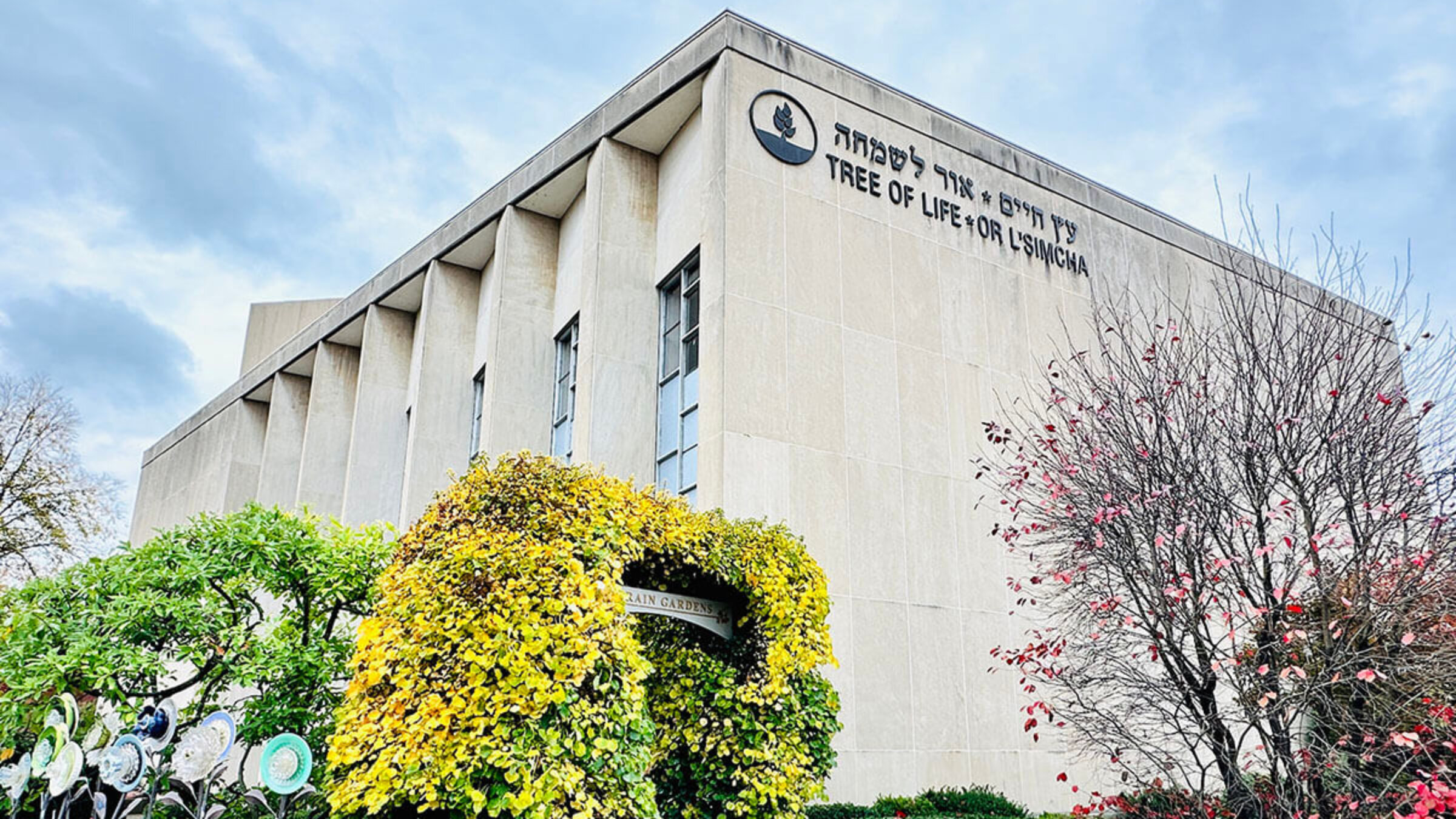Can a Tree of Life memorial ‘end antisemitism in our lifetime’? Its new CEO hopes so.
Carole Zawatsky, the first head of the new Tree of Life, shares her vision for educating Americans about antisemitism

The Tree of Life synagogue photographed four years after the tragic event. Photo by Benyamin Cohen
(JTA) – The foundation overseeing the rebuilding plans for the site of the Tree of Life synagogue shooting in Pittsburgh has selected its first director, and her aims are nothing less than the total end of antisemitism.
Carole Zawatsky, a longtime veteran in Jewish nonprofit leadership, was announced as the first new Tree of Life CEO Tuesday. Her appointment came as the nonprofit, which includes a planned memorial, museum and education center, revealed its grand plans for what its leadership hopes the space will become in the aftermath of the 2018 shooting that left 11 people dead.
“Wouldn’t it be wonderful if, in our lifetime, we could eradicate antisemitism?” Zawatsky told the Jewish Telegraphic Agency. “I think if we don’t work toward ending antisemitism in our lifetime, and we turn away from the rise of antisemitism, we stand no chance of achieving that goal.”
There are dozens of Holocaust museums and other American institutions that already work toward eradicating antisemitism; Zawatsky herself worked at the U.S. Holocaust Memorial Museum in Washington, D.C., when it first opened, creating public education programs that toured the country. But, she says, “for the most part, we were talking about things that were in the past and, most significantly, that didn’t happen on American soil.”
To that end, Zawatsky said, the reinvisioned Tree of Life can play a central role: as a place-based museum and memorial of the shooting, that situates the horrific events of that day in a larger continuum of American antisemitism, gun violence, extremism and hate speech. The emotional pull of the location itself, she hopes, will go a long way toward educating visitors: “There is no other institution in American Jewish life built on the site where history actually happened. In and of itself, that’s incredibly powerful.”
Zawatsky’s other roles with Jewish institutions have included nine years as CEO of the Edlavitch Jewish Community Center in Washington, D.C., as well as stints with the JCC of San Francisco; the Maltz Museum of Jewish Heritage in Cleveland; the Jewish Museum in New York; and, for much of the past year, the Weitzman National Museum of American Jewish History in Philadelphia.
She is new to Pittsburgh, but notes that antisemitic attacks have a way of bringing geographically disparate Jewish communities together: “When I was the CEO of the Edlavitch DC JCC and JCCs were getting bomb threats, I never thought, ‘That’s not me, that was Delaware, that was New Jersey.’ That’s all of us. I think as a Jew in America, this is our history because it’s everyone’s history.”
Ending antisemitism is a central aim of the pitch behind Remember Rebuild Renew, the fundraising campaign for the synagogue redesign and antisemitism museum. Tree of Life has secured more than $6 million from the state of Pennsylvania for the project, and recently hired a team of lobbyists to seek out federal funding opportunities as well. Zawatsky declined to share further budget details but said many private funders had expressed interest; she said she would soon be hiring staff.
The synagogue hired world-renowned architect Daniel Libeskind to design the new complex, which will function as a combined memorial, museum and house of worship. In previous statements the organization had pushed to begin construction in 2023, with the facility opening the following year, but Zawatsky said solid dates for the project are “premature.”
The new organization will also continue to serve as an active congregation for Tree of Life synagogue members, including survivors of the attack, meaning that the congregation’s spiritual and lay leaders are also part of the conversation as it reinvents itself as a memorial. This excites Zawatsky, who believes the combined space “does truly what the notion of a space of learning, a beit midrash, does.” The building has not reopened since the shooting.
Asked whether she was concerned the new project would attract unwanted attention from “dark tourists” or extremists, Zawatsky said the Tree of Life team is “working with security experts.”
Even beyond its lofty educational goals, there are other challenges ahead for Tree of Life. The shooter is scheduled to go on trial in April, a period that Zawatsky acknowledges will be “very painful, very difficult, and the role of the Tree of Life and all of us involved in it is to help to, in any way we can, ease the pain of that experience.”
Whether ending antisemitism is an achievable goal, the potency of Tree of Life as a symbol of its dangers will continue, and its new leadership hopes to make the landmark an educational opportunity.
“One of the most powerful ways to deliver a message to tell a story is through an object,” Zawatsky said. “There is no more powerful object in the United States of America than the Tree of Life.”
This article originally appeared on JTA.org.
A message from our Publisher & CEO Rachel Fishman Feddersen

I hope you appreciated this article. Before you go, I’d like to ask you to please support the Forward’s award-winning, nonprofit journalism so that we can be prepared for whatever news 2025 brings.
At a time when other newsrooms are closing or cutting back, the Forward has removed its paywall and invested additional resources to report on the ground from Israel and around the U.S. on the impact of the war, rising antisemitism and polarized discourse.
Readers like you make it all possible. Support our work by becoming a Forward Member and connect with our journalism and your community.
— Rachel Fishman Feddersen, Publisher and CEO

























